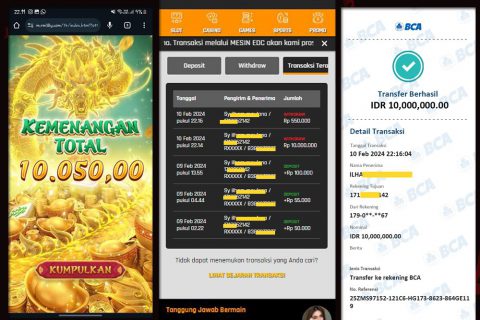ChucK package provides a new (and developing) audio programming language for real-time synthesis, composition, performance, and now, analysis – fully supported on MacOS X, Windows, and Linux.
ChucK presents a new time-based, concurrent programming model that’s highly precise and expressive (we call this strongly-timed), as well as dynamic control rates, and the ability to add and modify code on-the-fly. In addition, ChucK supports MIDI, OSC, HID device, and multi-channel audio.
It’s fun and easy to learn, and offers composers, researchers, and performers a powerful programming tool for building and experimenting with complex audio synthesis/analysis programs, and real-time interactive control.
To run ChucK with a program/patch called foo.ck simply run chuck and then the name of the file:
% chuck foo.ck
To run ChucK with multiple patches concurrently (or the same one multiple times):
% chuck foo.ck bar.ck bar.ck boo.ck
There are several flags you can specify to control how ChucK operates, or to find out about the system. For example,the following probes the audio system and prints out all available audio devices and MIDI devices. You may then refer to them (by number usually) from the command line or from your program.
% chuck –probe
ChucK can be run in a different terminal as a host/listener that patches may be sent to. The server should invoke the –loop flag to specify that the virtual machine should not halt automatically (when the current programs exit).
% chuck –loop
If a ChucK listener is running, we can (from a second terminal) send a program/patch to to the listener by using the + command line option:
% chuck + foo.ck
Similarly, you can use – and = to remove/replace a patch in the listener, and use ^ to find out the status.
To run most of the code or examples in this language specification, you only need to use the basic chuck program.
ChucK Crack+ Incl Product Key [Updated] 2022
——————
ChucK Cracked Accounts (from the onomatopoeia, alliterate, echo, and chuck) is the standalone Audio Programming Language (APL) for real-time audio synthesis, composition, performance, and now, analysis.
While ChucK is a programming language, it’s not a soundfont or synthesizer language – it’s a new, strong-timed, composer/performer oriented, time-based, easily accessed multi-channel audio programming language. It was inspired by the audio software GigaWatt, and (at least initially) has not been (directly) influenced by any real-time, APL, or reactive programming language (including Lisp, JavaScript, Reaktor, Max/MSP, MaxMSP, fx2p, fx0, Puppet, nibbler, oscilator, Peak/MIDI, Schematic, Simulink, and many others).
In addition to APL, ChucK also supports a wide range of other functionality, e.g. MIDI, audio, interactive control, sample manipulation, modular patching, lists, and real-time program/patch recording to disk. (We also support MacOS X, Windows, and Linux, as well as a wide range of audio devices including old and new digital format hardware like the original BOSS, CMoy, APM, Ultrasound devices, out-of-date Amigas, bad computers, and more.)
A single set of source code, when compiled and run, will generate an executable,.framework, Java archive, or OSC application that works on multiple platforms – each one in a different situation, and automatically capable of playing recorded and live performances, recalling sketches, and applying effects. ChucK was designed to be a real-time programming language that doesn’t require the presence of an „application“ to run – so it can still work if your main application leaves the computer running.
The API, available as libraries, allows any application to take advantage of ChucK features by embedding chunks of code within its own code. ChucK libraries include utility classes to help with the most common use cases.
But ChucK also has many internal features, some of which operate at different speeds. To take advantage of these, ChucK supports setting its internal rate at which code updates will occur, and even changing the rate in real-time. ChucK has a built-in feature to
ChucK Torrent [32|64bit]
The ChucK audio programming language was designed to support interactive, real-time programming of audio synthesis. We have chosen to make ChucK completely POSIX-compliant, including support for the C89/C99 standard.
Starting with ChucK 1.0.4, there are two small differences compared to ChucK 1.0.3:
1. ChucK programs require the chuck.ck library for real-time operations on audio and MIDI systems, such as signals, inputs, outputs, and processes.
2. The chuck-lib header now has a slightly changed interface: Change: Require >= 1.3.0
First off, ChucK is a language that’s not that different from what many other programmers already use. We’ve tried to stay close to the C programming language for simplicity.
ChucK is a simple audio programming language in which audio objects are independent of each other (or controlled by the programmer to a certain extent). Audio objects are simple constructs with only two components:
In ChucK, the time-domain is represented as a pair of double values t and f. The f component corresponds to the actual audio frequency or pitch of the sound, and is usually specified as a frequency in Hz. For example, suppose the f is 440 Hz, and the current sample of the input signal is 0. The time t is measured as the distance in seconds from the time of the beginning of the input signal. If the input signal lasts 1 second, then t goes from 0 to 1.
t: f: t: f: f: t:
0.00 0.00 0.00 0.00 0.00 0.00 0.00 0.00 0.00 0.00 0.00 0.00 0.00 0.00 0.00 0.00 0.00
1.00 0.00 0.00 0.00 0.00 0.00 0.00 0.00 0.00 0.00 0.00 0.00 0.00 0.00 0.00 0.00
2.00 0.00 0.00 0.00 0.00 0.00 0.00 0.00 0.00 0.00 0.00 0.00 0.00 0.00 0.00 0.00
3.00 0.00 0.00 0.00 0.00 0.00 0.00 0.00 0.00 0.00
b7e8fdf5c8
ChucK Crack+ Keygen Free [2022]
ChucK is designed to be as readable as possible. It’s based on structure, clarity, and examples, with minimal jargon. ChucK offers real-time control of audio and MIDI – with both event and file-based (MP3) and mixed media. Its code is short, sweet, and clean.
ChucK supports:
* Time
* Concurrent programming
* Dynamic Control
* Synths, VSTs, Direct audio, Audio plugins, and other effects
* Multi-channel audio
* Reactive programming, to help you control your sound
* Audio and MIDI
* MIDI recording and live MIDI playback
ChucK offers some of the features of other programming languages, but in a very different context.
ChucK is meant to be fun and easy to learn. This makes it great for small experiments. However, it supports many sound synthesis and analysis algorithms, and allows you to build software with amazing capabilities. For example, as of version 0.9.6, ChucK supports plugins based on the OSC (Open Sound Control) protocol. The current plugin is a stereo chorus/delay effect.
Features:
* Audio programming with code
* Time-based control (use your program to generate musical time by controlling tempo and/or time signature, and get musical time from the system to control your program)
* Event-based control of audio and MIDI
* Real-time re-modifiable (on the fly) code
* Reactive programming – to help you control your sound
* Multi-channel audio
* Hooks, OSC, MIDI, and HID device support
* Dynamic Control – to define new time signatures, add and modify any piece of code, and/or control rate and other parameters of any sound
* Records input from MIDI or OSC to files (or to files that store other data)
* Audio monitoring
* Timestamps in audio files
* Audio output via audio plugins and ChucK mixers (audio plugins will allow your code to produce audio)
* Support for MIDI
* Support for OSC (if plugins are installed)
* Support for Record/Play
* Support for many other features
* Generates documentation and simple demos
* Supports object-based architecture (for easy modular programming)
* Support for scopes, break conditions, files, and variables
* Unambiguous parsing of code – so it’s easy to read
* Supports setjmp/
What’s New In ChucK?
chuck takes in a (for now) single file that’s either.flx (for Python) or.ck (for C). It then runs your program in virtual machine. From a second terminal, you can send a program/patch (with a file extension of.ck) to the listener by using the + command line option, and it will return the result – its filename.
chuck offers interactive control of the parameters of the program, by command line input, or by a menubar in the window:
A menu bar with these options:
Enter-Submit->Print parameter->Run->Run sequentially->Stop
A pop-up window with the following options:
Enter-Submit->Print parameter->Run->Run sequentially->Stop
We also include a button to stop and print out the contents of the AudioSketch, a text/dump-and-visualize patch for debugging.
The command line option -w (for word) works like -t, in that it allows you to find out the contents of the AudioSketch file, then dump it to disk. This is useful for catching segfaults. You can also go to the problem bit in the AudioSketch file by pressing Ctrl-X to edit the file, then Ctrl-Y to save the file, then Alt-Z to undo. The command line option –dump works a little differently, in that it dumps the whole AudioSketch, not just the problem bit. You can then use Ctrl-Z to undo.
chuck can be used for learning purposes as well. The user interface code is written in the language Txt, so you can edit it as much as you want and play around.
ChucK Community:
The ChucK community is vibrant and active, and many people are playing with the language, so it’s easy to get help, or even engage in conversations about your experiences with it. I’ll try to update this summary when time permits.
ChucK Under the Hood:
ChucK is a real-time language that I designed to be as powerful and efficient as possible for audio synthesis and performance – but that’s also easy to learn. It was designed to be compact, to minimize parsing/synthesis cycles, minimize type checking/programming, and to be language extensions be performant, clear, and useful for audio synthesis. The language is based on a collection of small primitive functions that are easy to read and
System Requirements For ChucK:
Minimum Requirements:
OS: Windows 7/8/10
Processor: Intel Core i3
Memory: 1GB RAM
Graphics: NVIDIA GeForce GTS 450 or ATI HD 4890 or higher
DirectX: Version 9.0c
Hard Drive: 40GB space
Network: Broadband Internet connection
Recommended Requirements:
Processor: Intel Core i5
Memory: 2GB RAM
Graphics: NVIDIA GeForce GTS 450 or ATI HD 48
https://medcoi.com/network/upload/files/2022/07/g6oAz33ZAd6DAmXFspE2_04_de92b0704bc606ea5133f574952cf3c4_file.pdf
https://giessener-daemmstoffe.de/wp-content/uploads/2022/07/Egoist.pdf
https://humansofkarnataka.com/video-cache-viewer-for-pc/
http://www.renexus.org/network/upload/files/2022/07/Q9xLI5JvILFpVgStojls_04_fbf063525e82bc445d71c92ca4356d49_file.pdf
http://www.ndvadvisers.com/?p=
https://omidsoltani.ir/246164/lansuper-free-download-pc-windows.html
https://wakelet.com/wake/LYe4Vg3fc2vw23cQ7NLYO
https://www.chiesacristiana.eu/2022/07/04/nexuz-barcode-crack-activator-free-win-mac/
http://rastaan.com/?p=9976
https://rixma.se/wp-content/uploads/2022/07/chrysali.pdf
http://www.ndvadvisers.com/wp-content/uploads/2022/07/P7S_Viewer.pdf
https://marketstory360.com/news/45949/safety-stock-calculator-crack-keygen-download-2022/
https://favs.favelas.top/upload/files/2022/07/CJ1fXHP3RKRFWizQxnff_04_384b526529421cbb3f70e5e313bb7e1b_file.pdf
https://hilfeindeinerstadt.de/wp-content/uploads/2022/07/What_039s_Running.pdf
https://moniispace.com/upload/files/2022/07/vNfEpTWmsvjdti743XHY_04_384b526529421cbb3f70e5e313bb7e1b_file.pdf
http://yogaapaia.it/archives/33798
https://natsegal.com/check-browsers-lnk-free-win-mac/
https://richard-wagner-werkstatt.com/2022/07/04/multi-password-recovery-crack-free/
https://ceptinetangdi.wixsite.com/prakofinphy/post/kana-wallchanger-2-3-5-41-crack-lifetime-activation-code
https://dialinh.com/i-lock-crack/






Discussion
Leave a reply